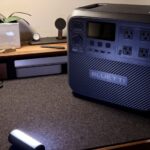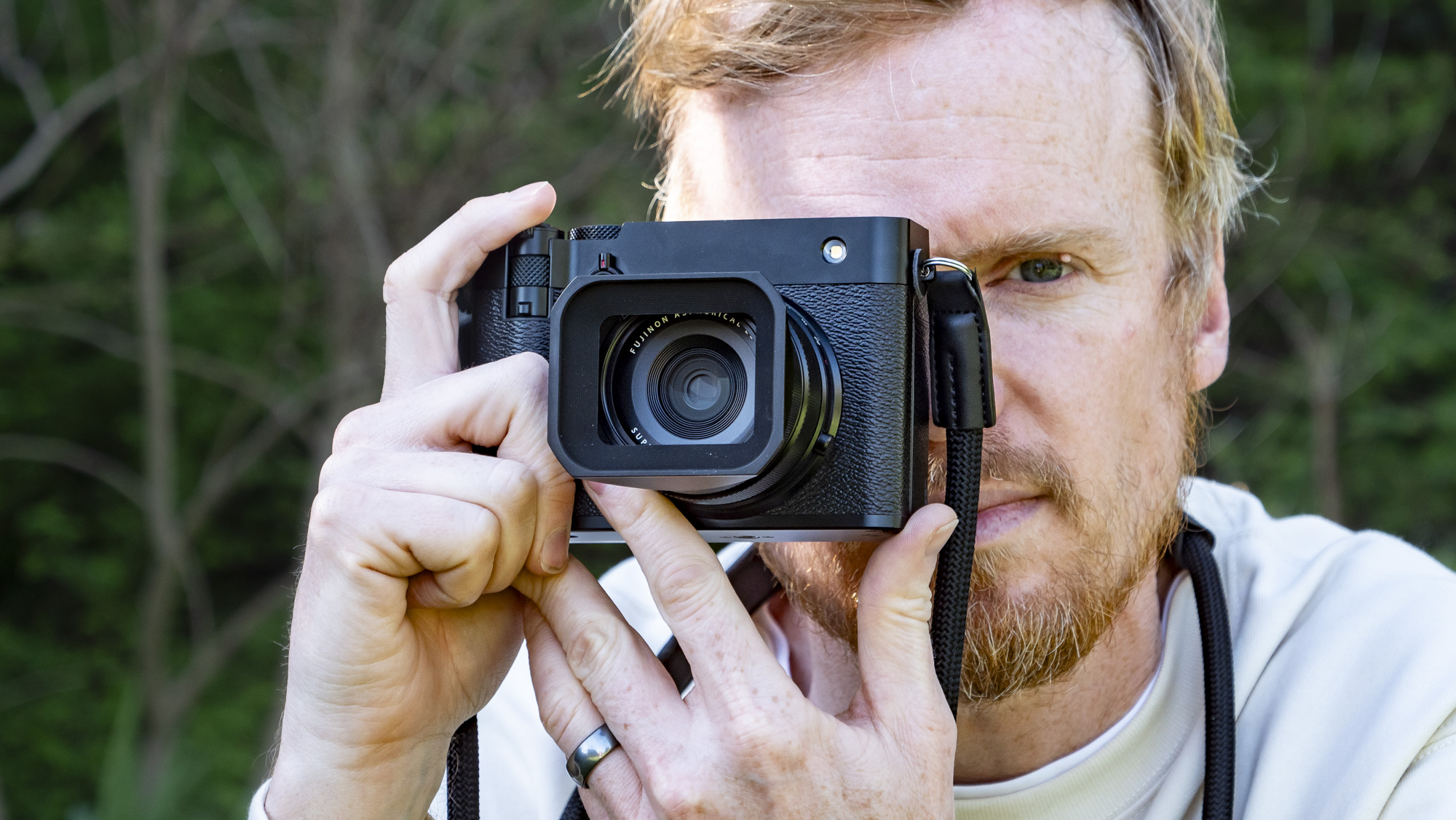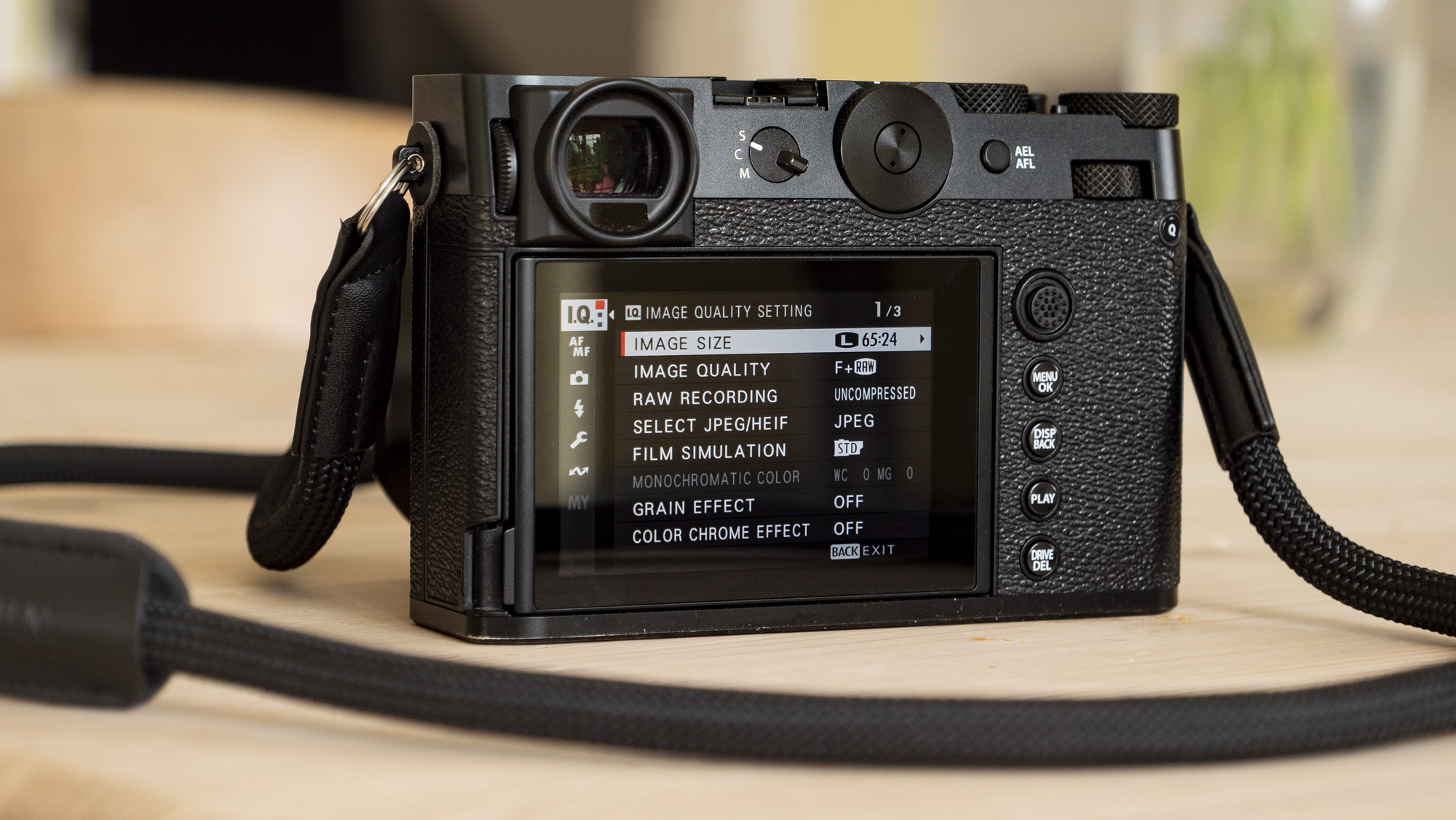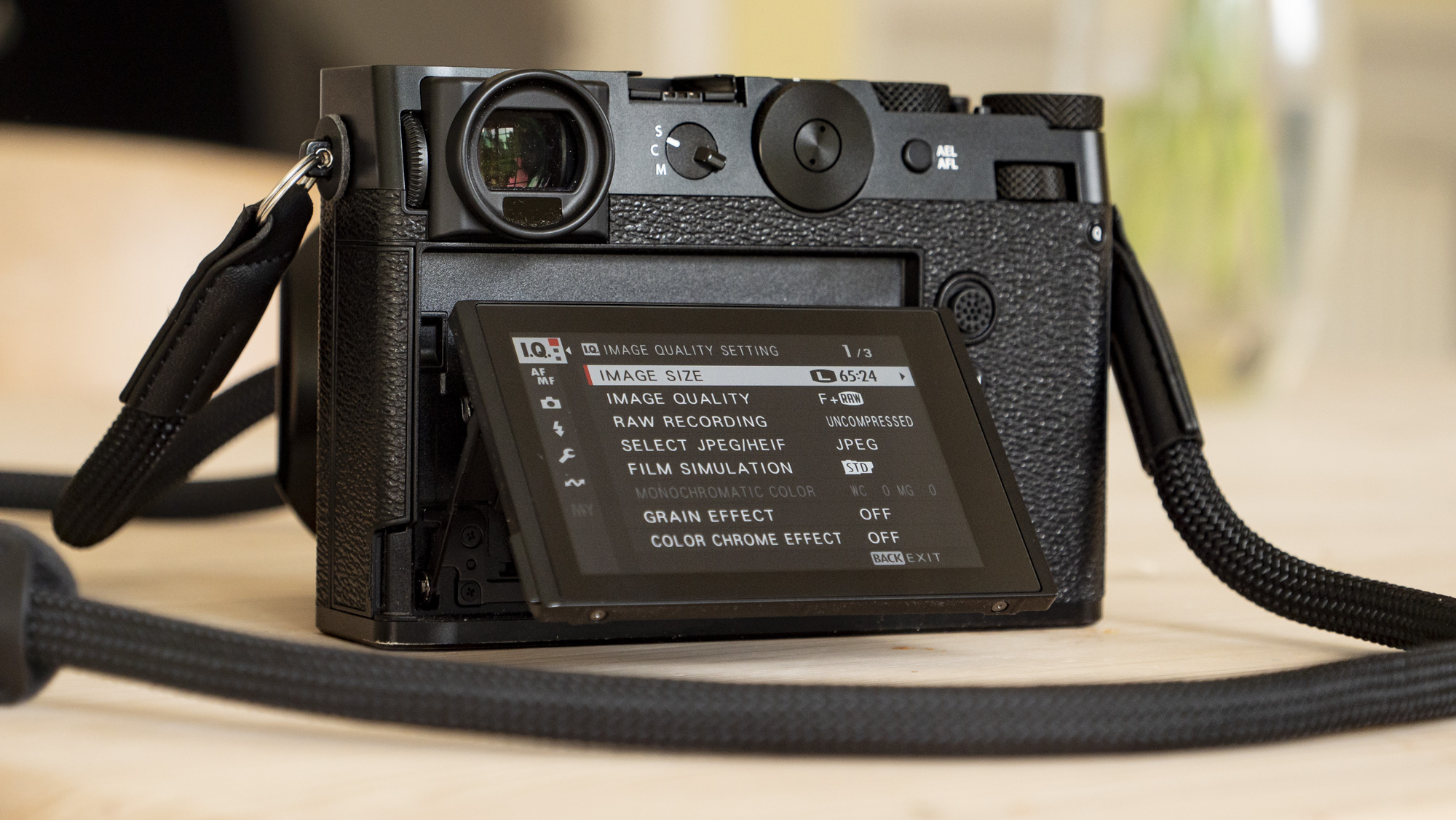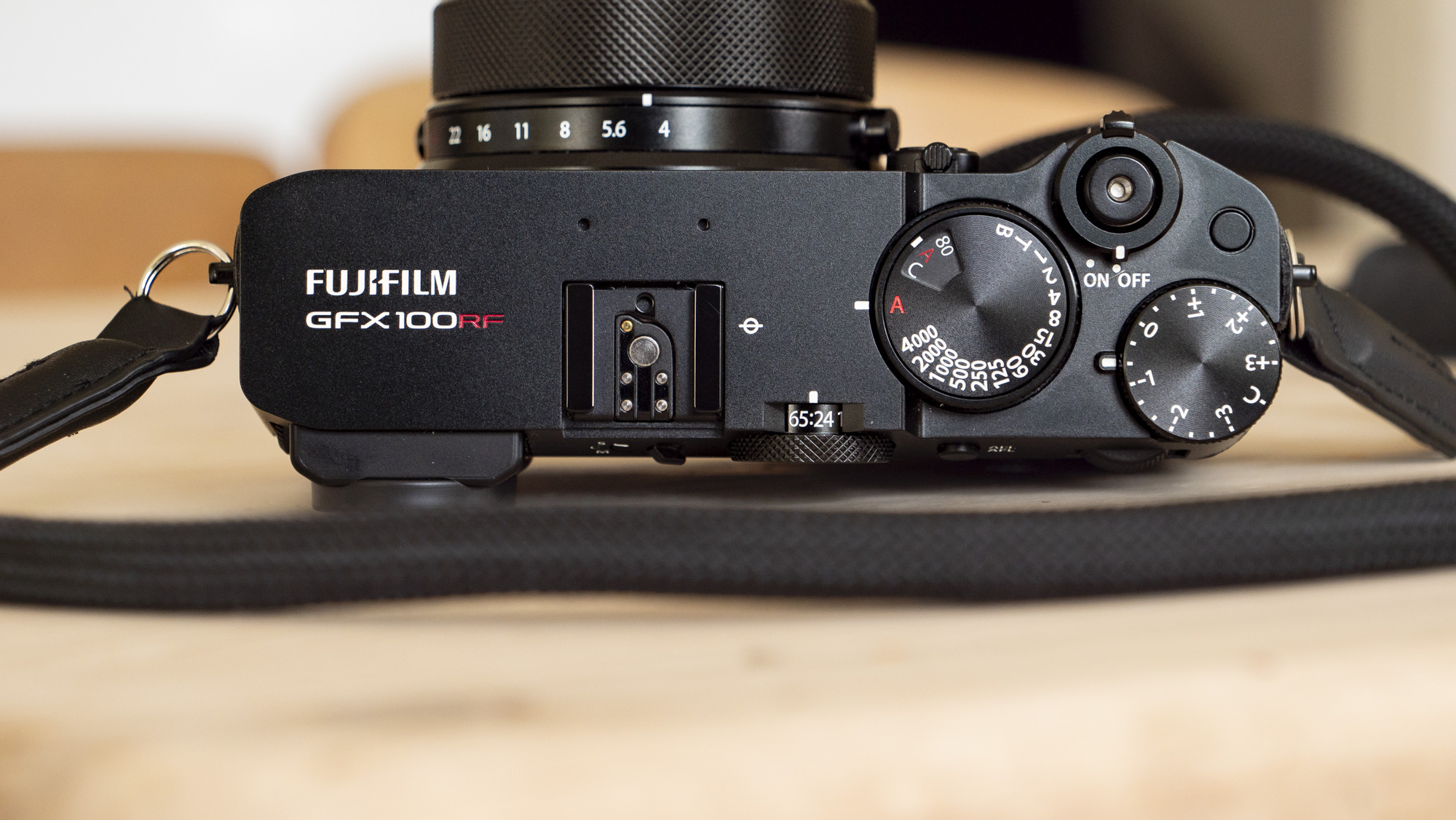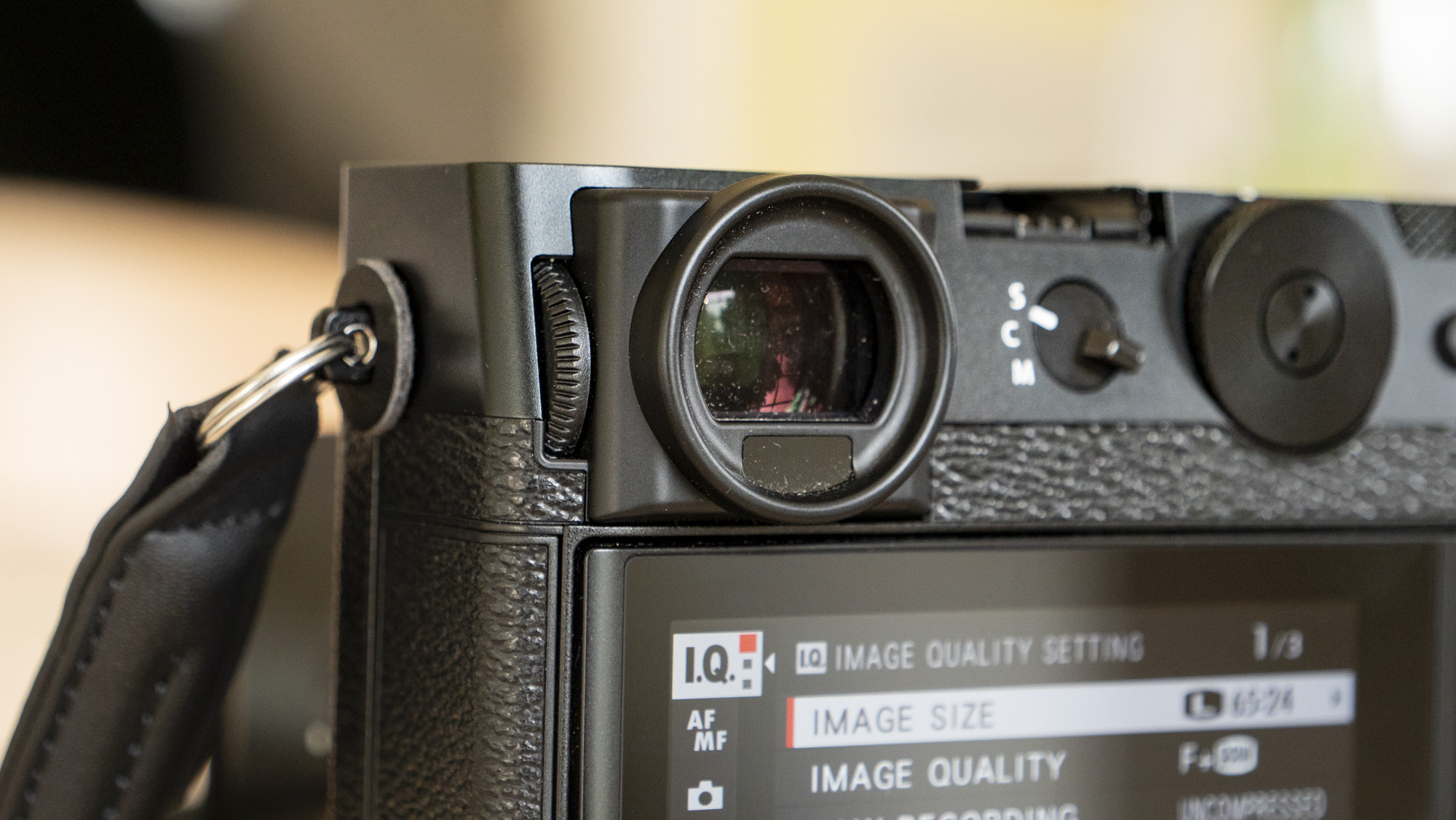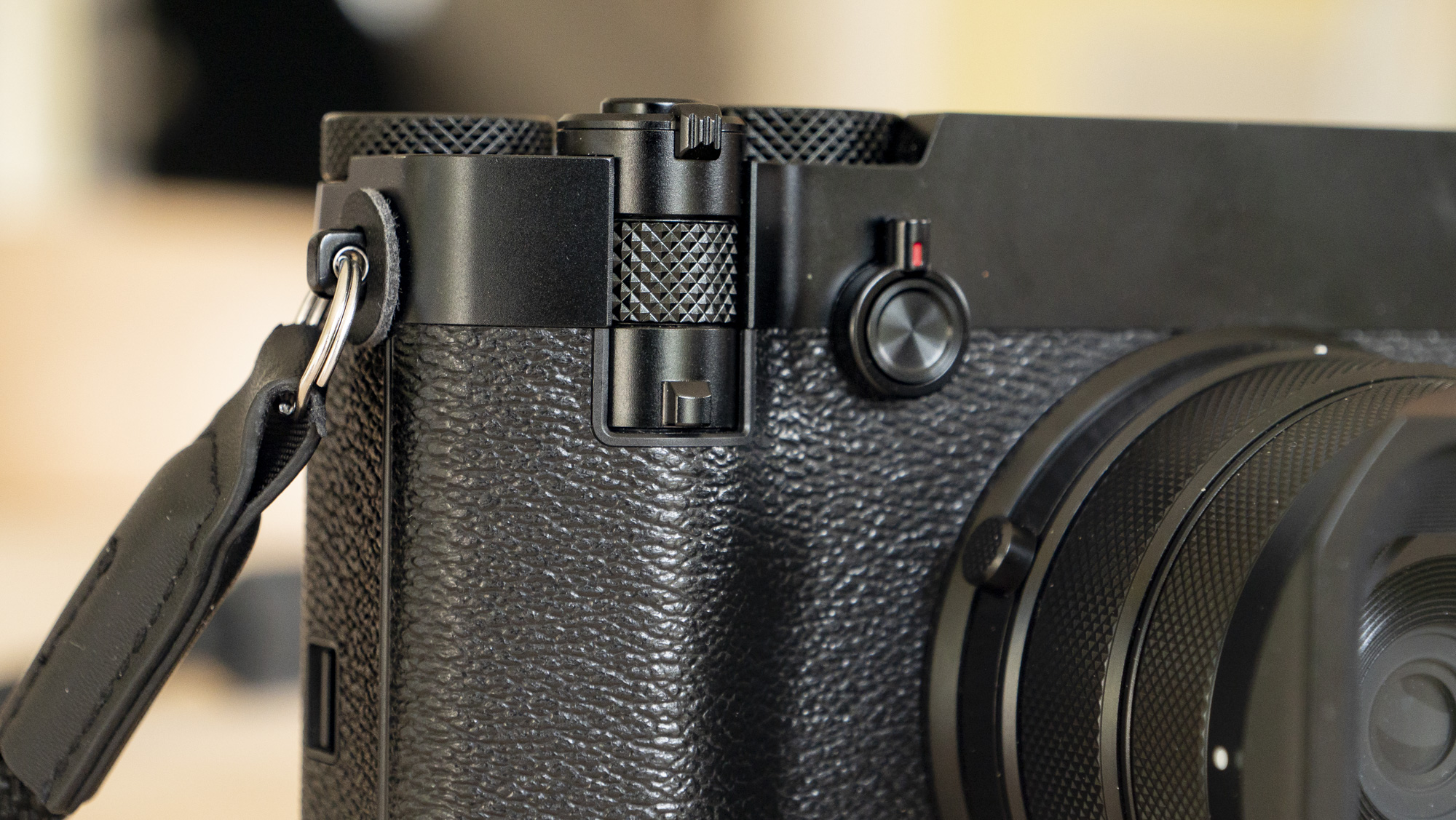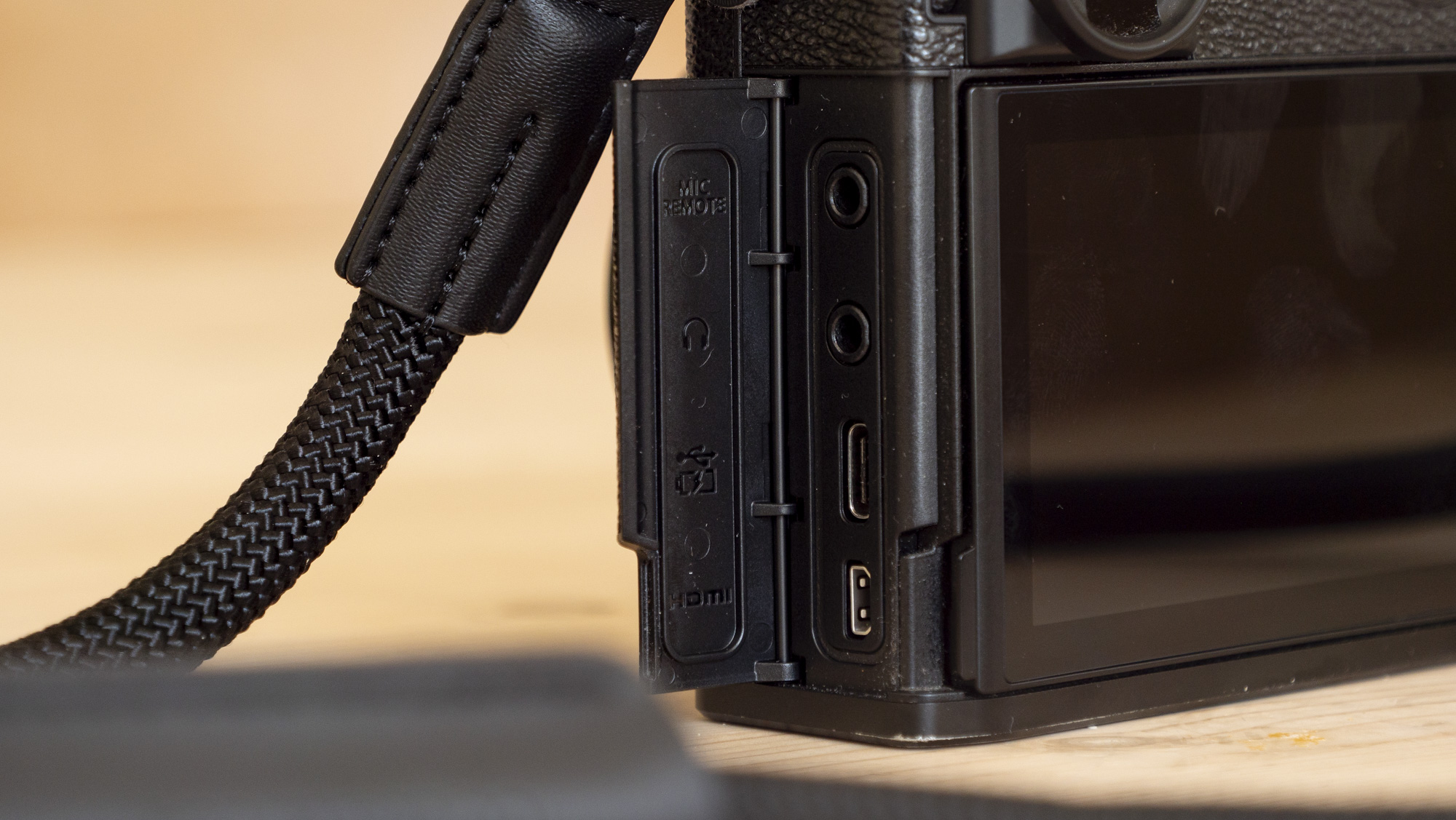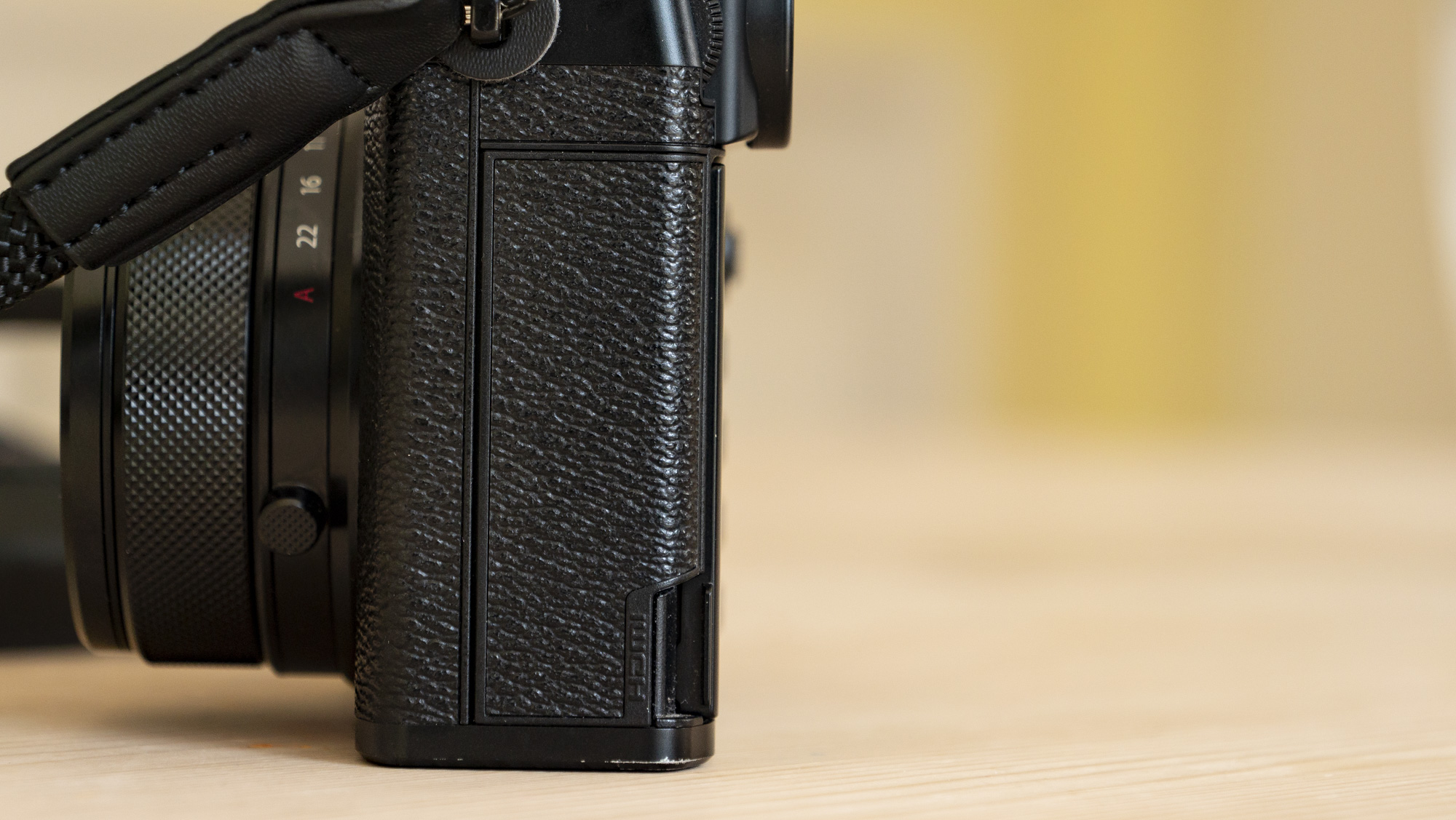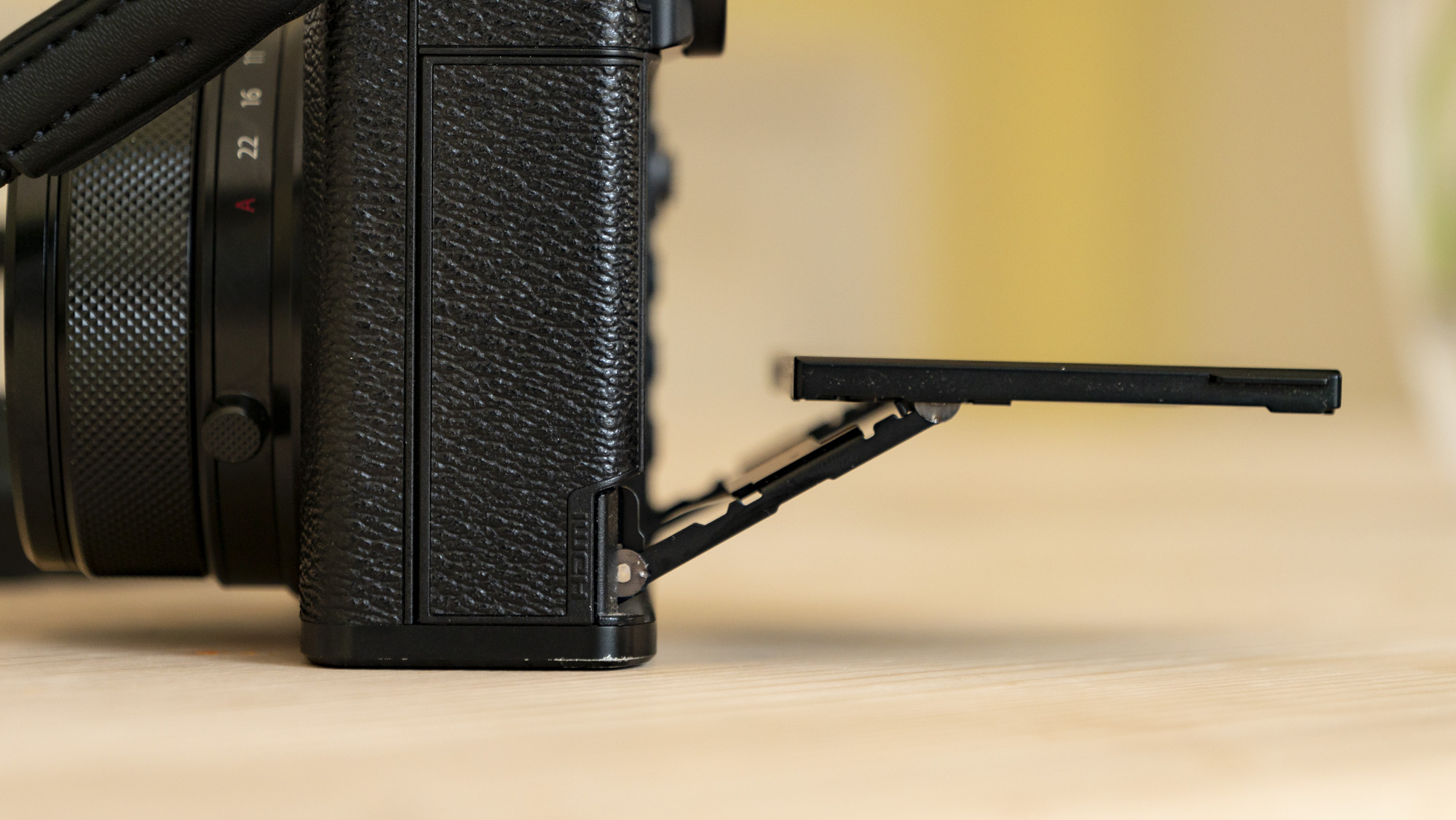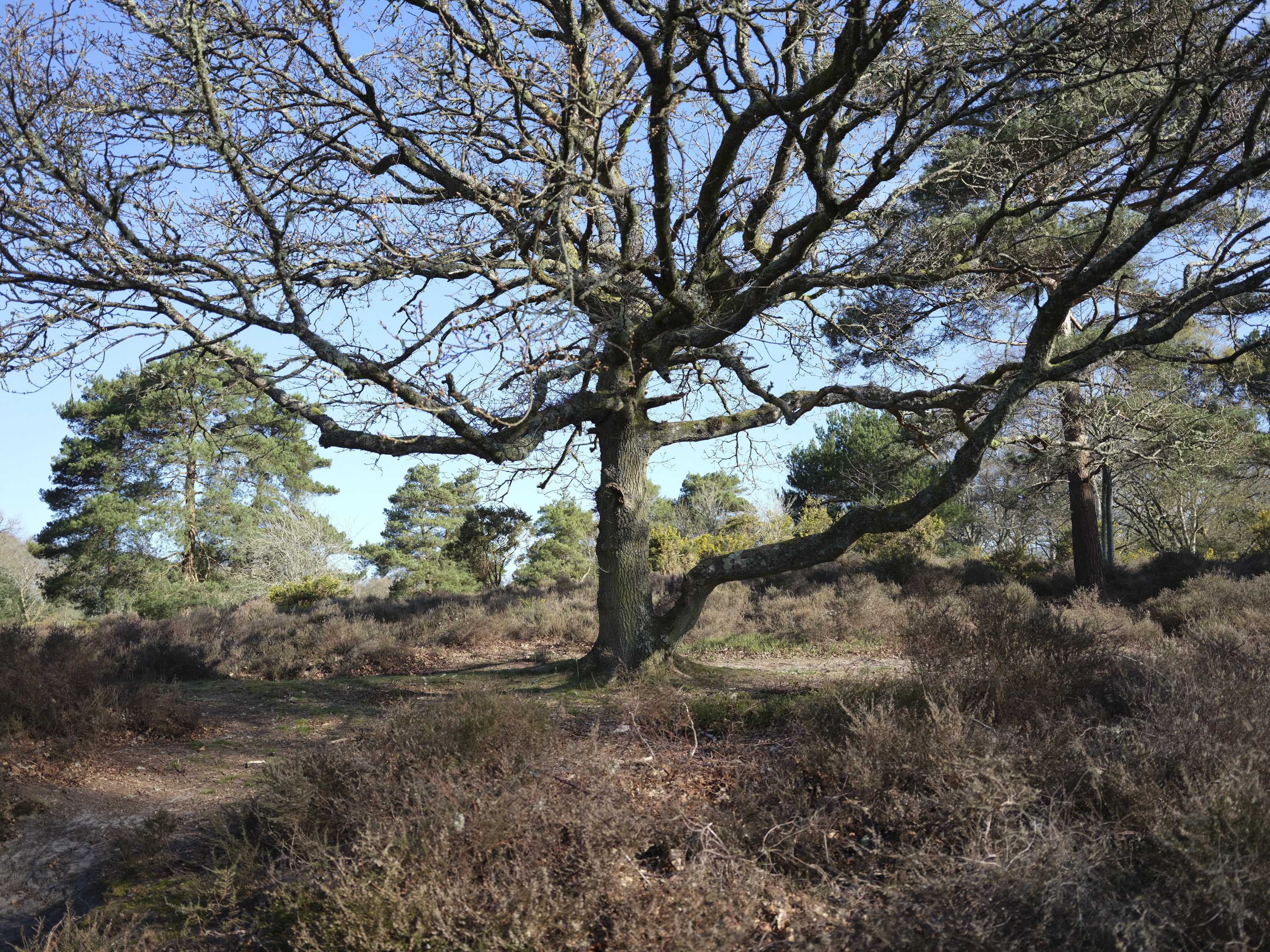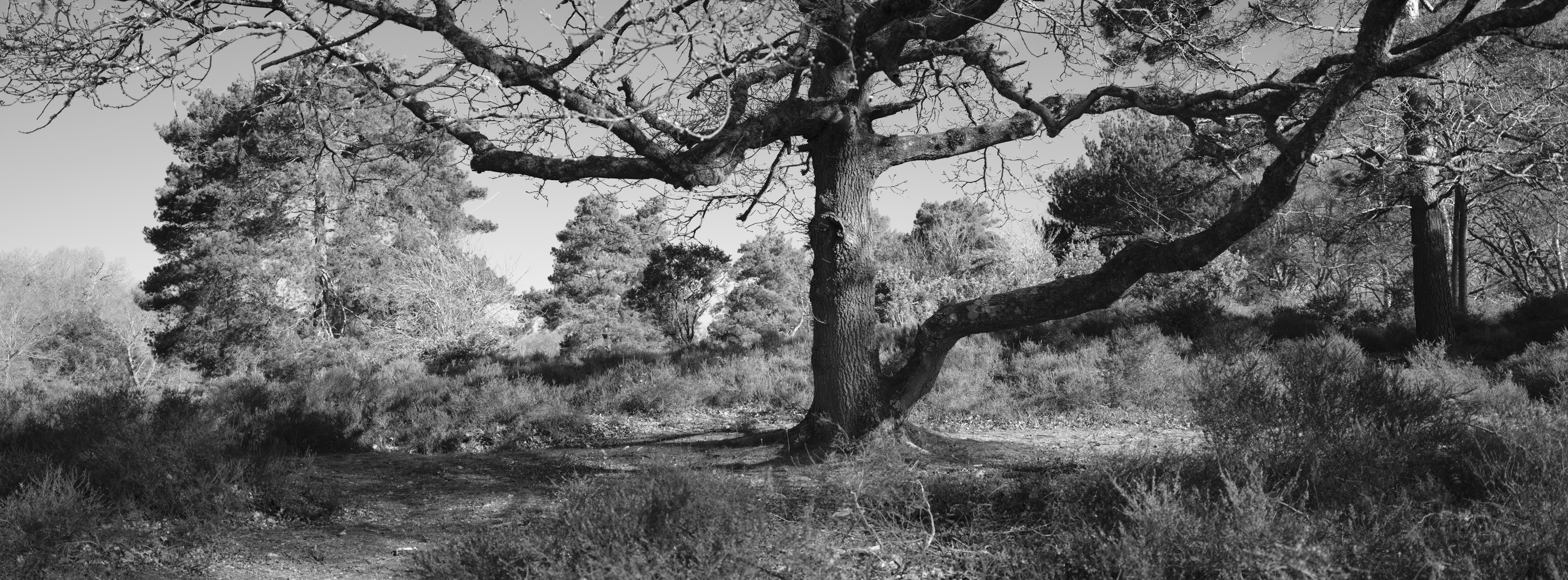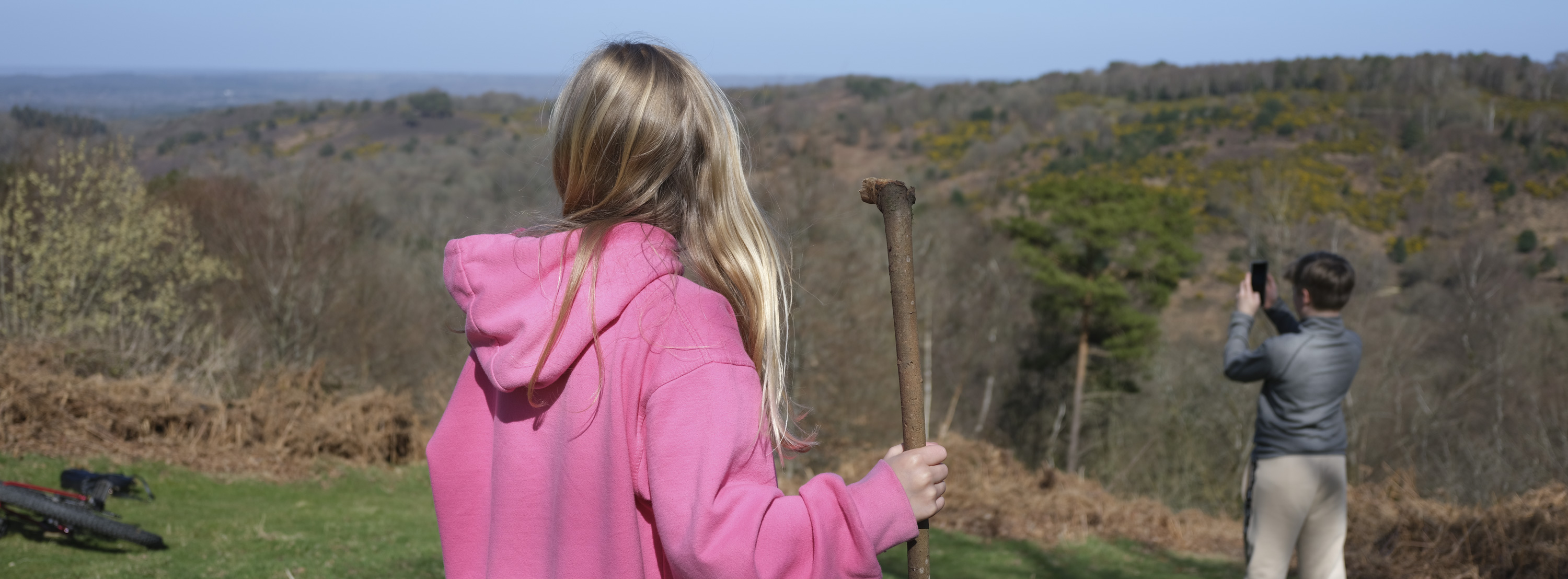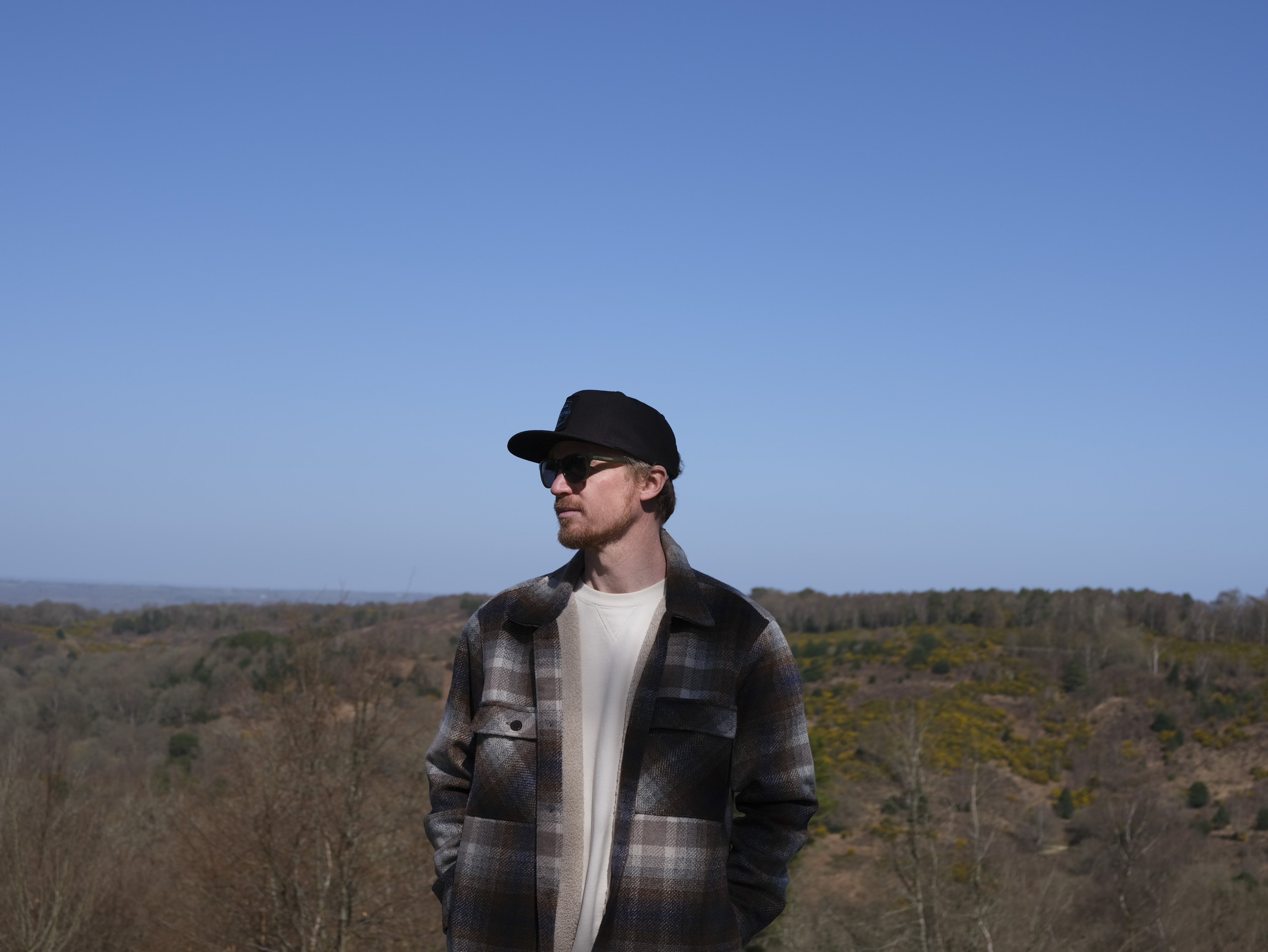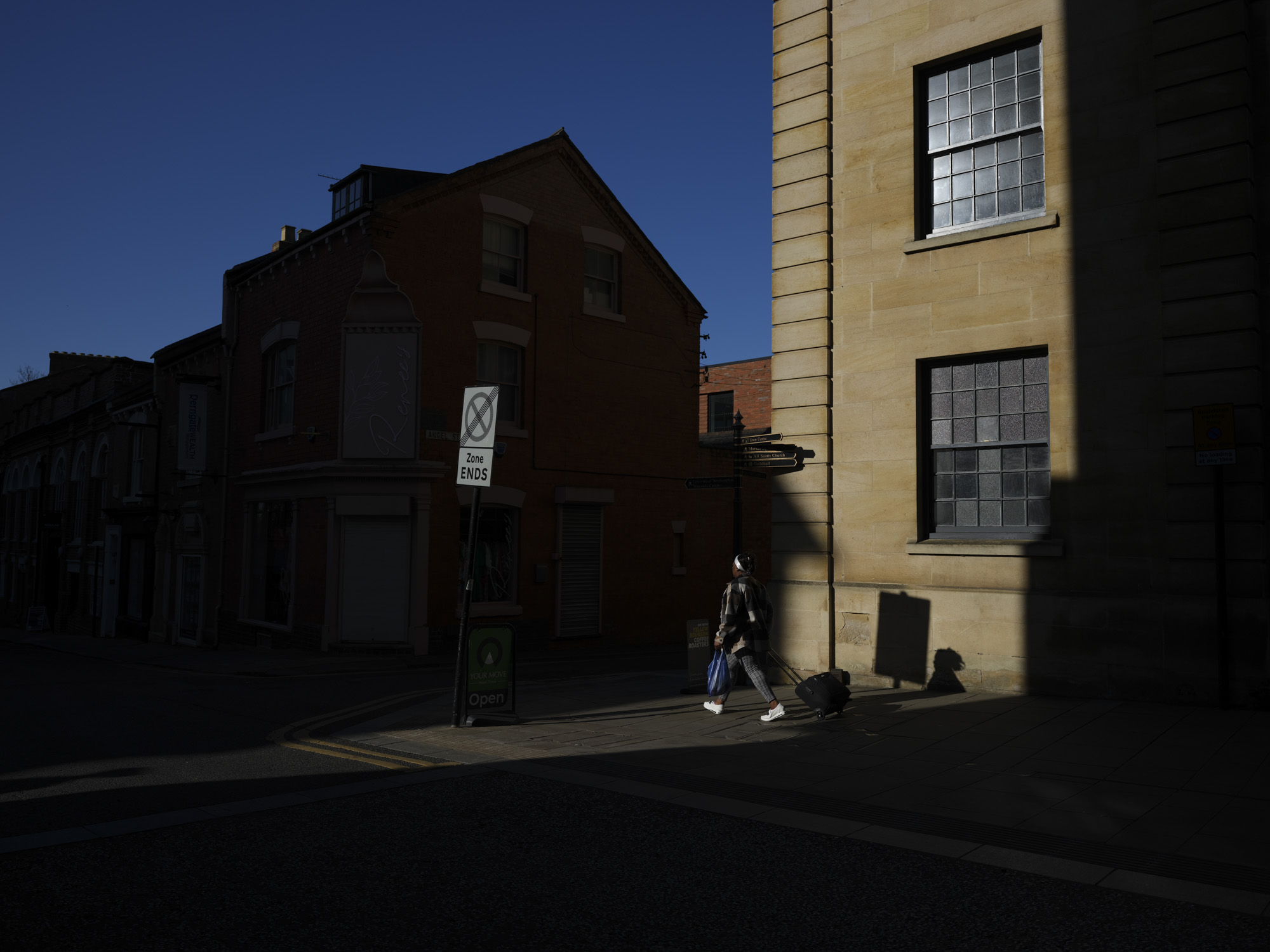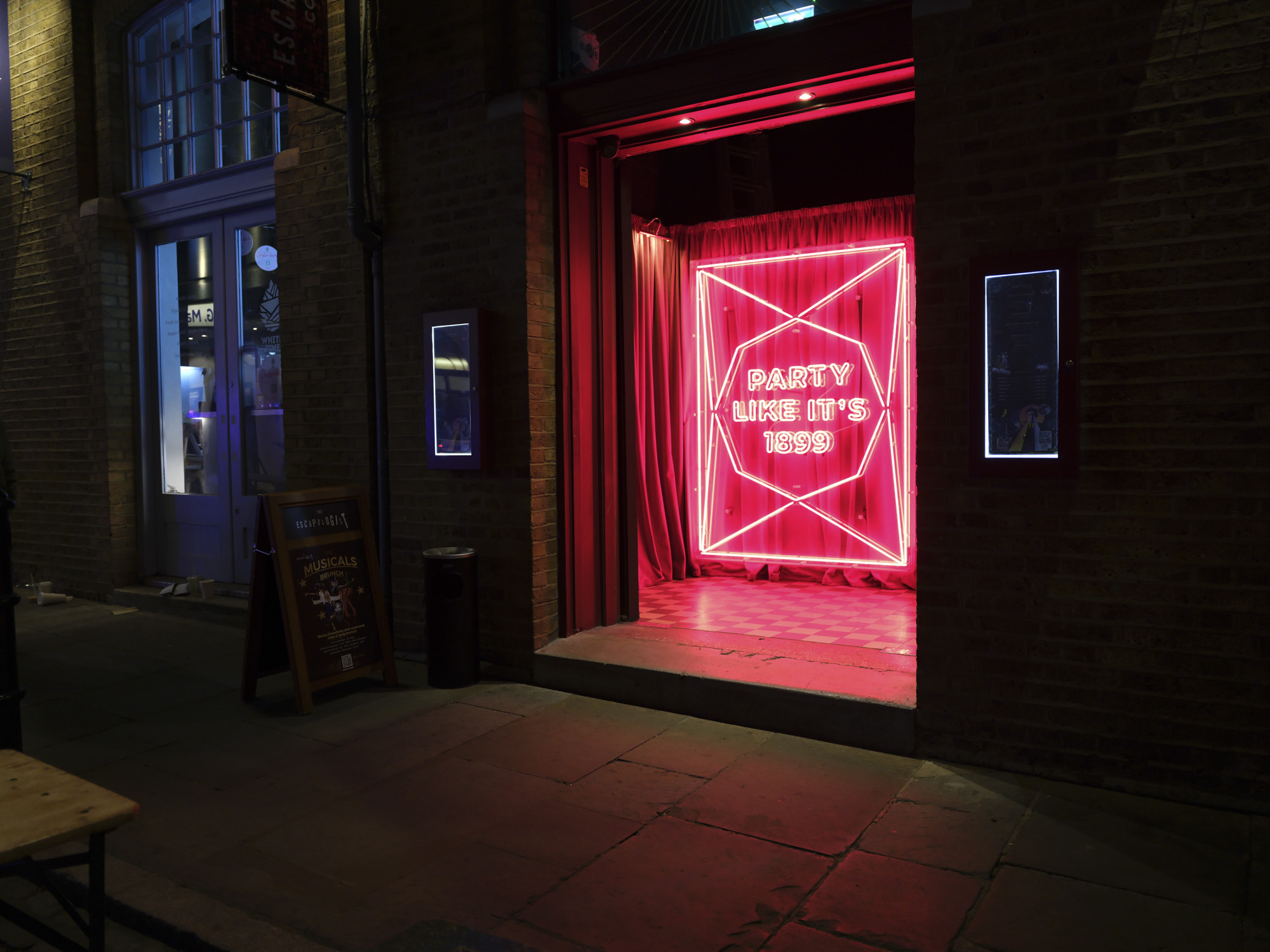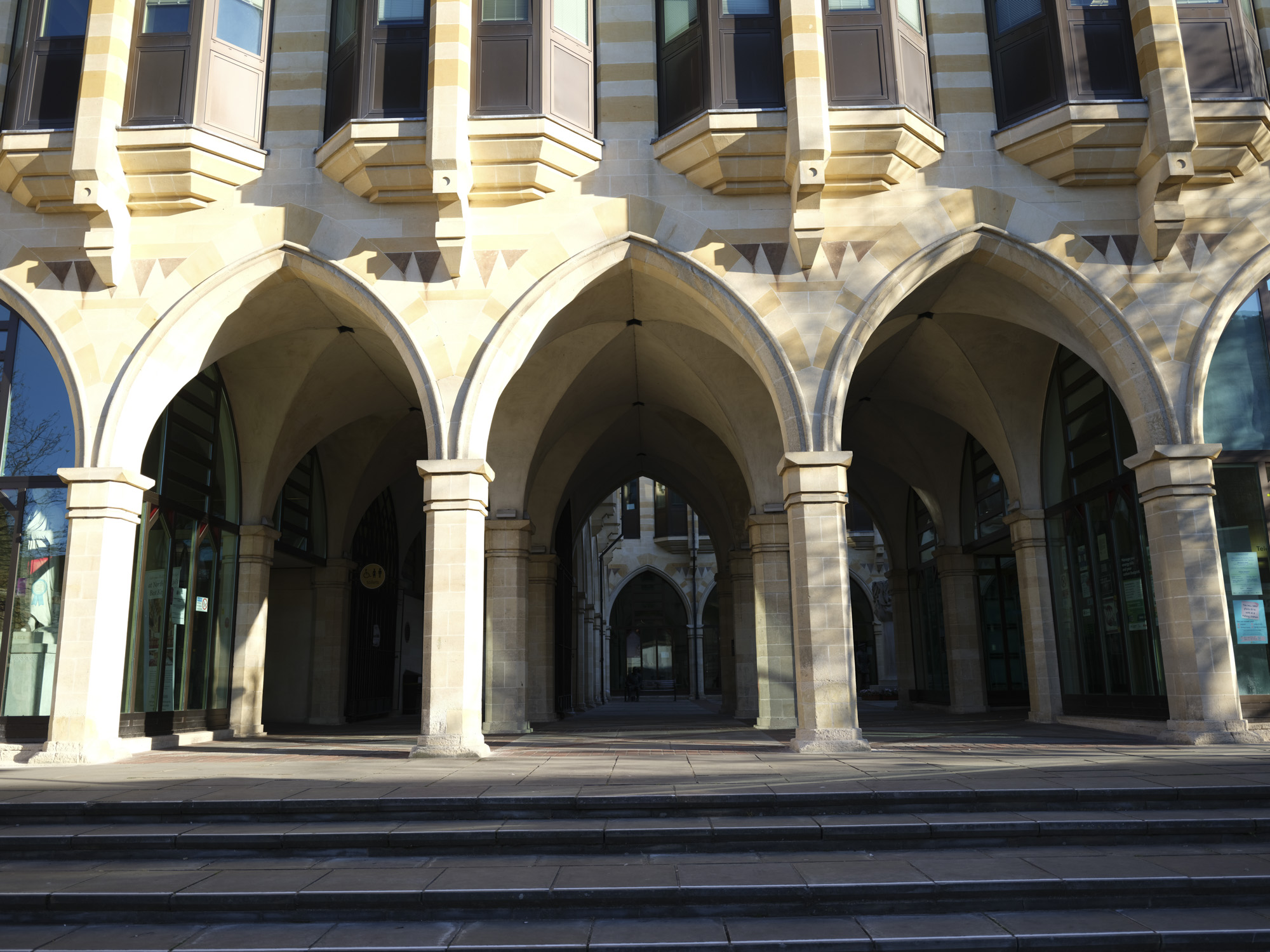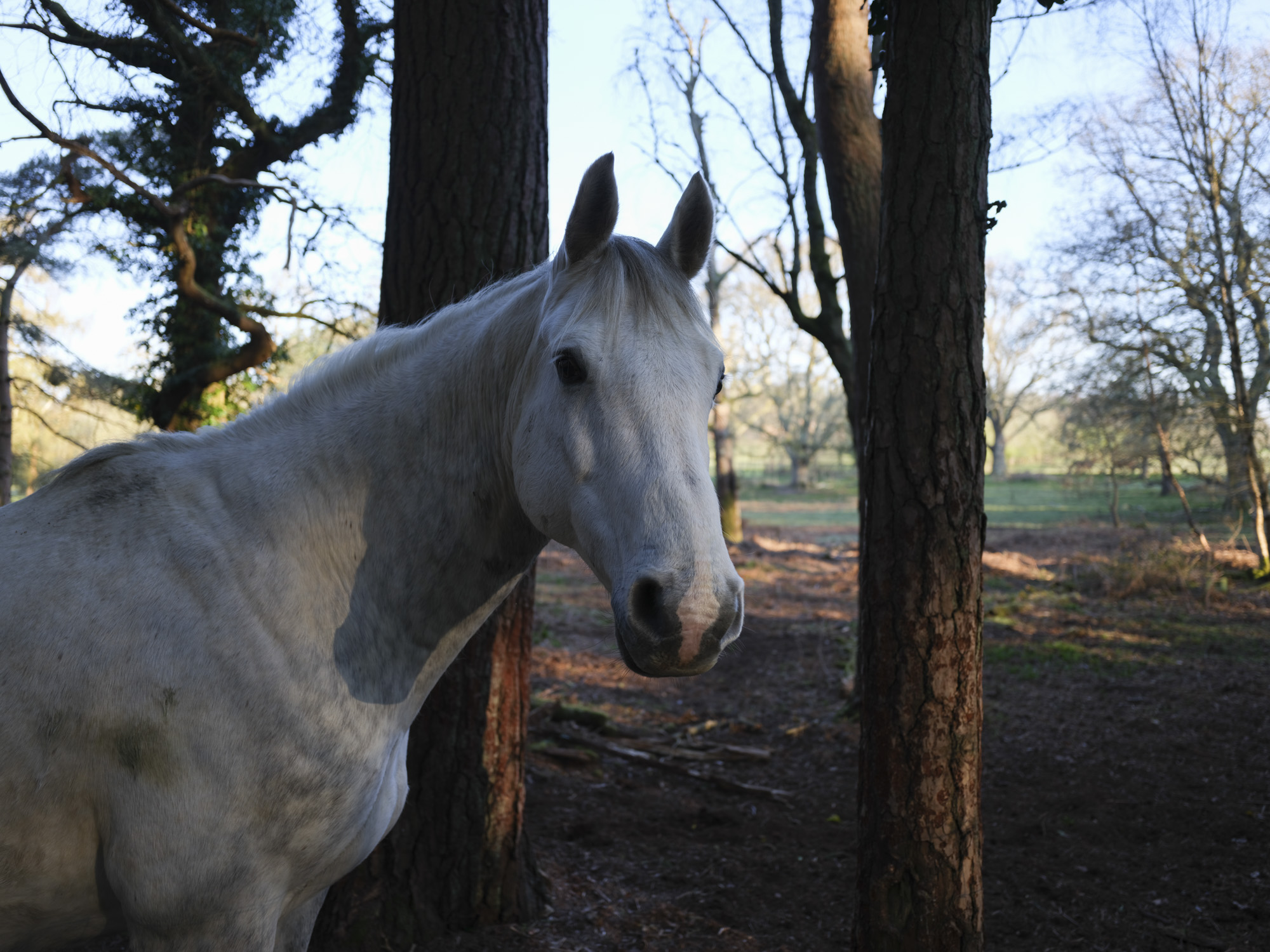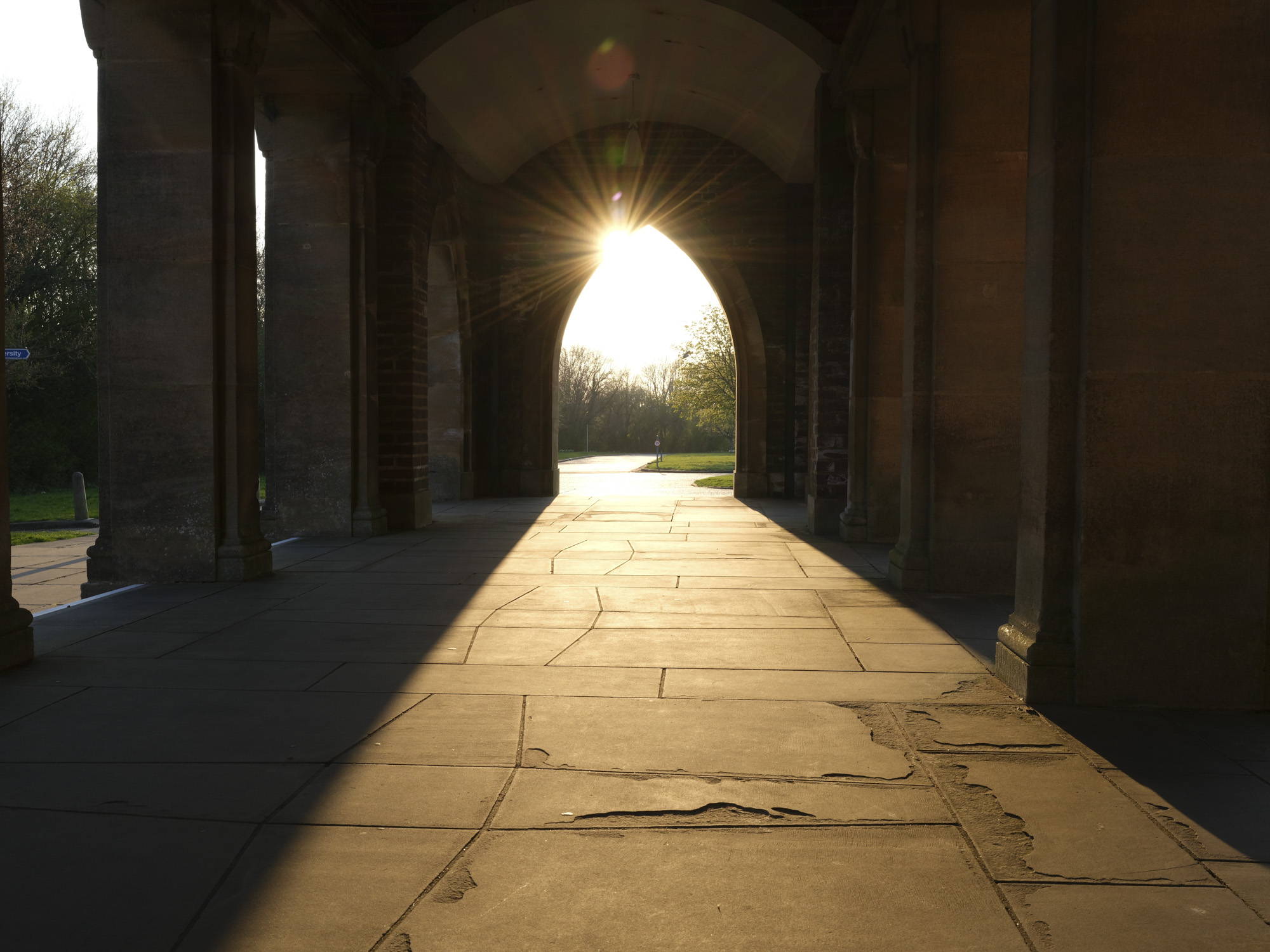Why you can trust TechRadar
We spend hours testing every product or service we review, so you can be sure you’re buying the best. Find out more about how we test.
Fujifilm GFX100RF: one-minute review
Fujifilm’s GFX100RF is the brand’s first-ever compact camera with a medium-format sensor, marrying the image quality of the 102MP GFX100S II with an impossibly-small Fujifilm X100 VI rangefinder-style body.
‘Compact’ is perhaps a stretch, but that’s the category that this premium camera falls under by virtue of its built-in lens, which is a super-sharp 35mm f/4 optic with a 28mm equivalent focal length.
Fujifilm has prioritized compact lens proportions over aperture versatility, and the maximum f/4 aperture and lack of optical stabilization are potential dealbreakers. However, for pixel peepers and resolution-craving photographers, the GFX100RF’s quality is unmatched in this class, even outdoing the Leica Q3.
Beyond its image quality, the GFX100RF feels premium in every way. The top plate, machined from a single 500g block of aluminum, is a delight and packed with useful controls, some of which are unique and add a touch of flair, such as the aspect ratio dial.
Fujifilm has somehow managed to include a vast number of external controls without the camera feeling crowded, and it’s both unfussy and versatile in use – and a special mention must go to the bright tilt touchscreen that neatly folds away into the body.
Armed with Fujifilm’s latest X Processor 5 chip and autofocus skills, the GFX100RF is also a capable performer, even if this medium-format snapper doesn’t compete with the speed of smaller-format rivals.
Ultimately, this is a camera that makes a lot of sense, even if its quality will be overkill for most people, as is it price (though I reckon it’s good value for what you get). Professional photographers with a penchant for street and landscape photography in particular will find no better compact camera than the characterful GFX100RF.
Fujifilm GFX100RF: price and release date
- List price is $4,899 / £4,699 / AU$8,799
- It’s available from early April 2025 in two versions, with a silver or a black top plate
- A premium strap, protective lens filter, lens hood and lens adapter are included
The GFX100RF is a premium medium-format compact with a price tag to match, costing $4,899 / £4,699 / AU$8,799. Still, that’s cheaper than the full-frame Leica Q3, and you get a bunch of accessories in the box: a premium strap, protective lens filter, lens hood and lens adapter.
When you consider it’s an all-in-one medium-format package with its built-in lens, the GFX100RF feels like pretty good value – other GFX cameras will cost you more, without a lens. For example, the GFX100S II, which shares the same sensor, launched at $4,999 / £4,999 / AU$8,699. However, the GFX100RF is triple the price of the APS-C format Fujifilm X100VI compact camera.
The GFX100RF is available from early April 2025 in two versions, one with a silver top plate, the other all-black.
Fujifilm GFX100RF: specs
|
Sensor: |
102MP medium-format |
|
Video: |
4K 30p 4:2:2 10-bit All-Intra |
|
Cont. shooting |
6fps with continuous AF, for sequences up to 296 JPEGs or 40 raws |
|
Viewfinder: |
5.76m-dot |
|
LCD: |
3.2-inch, 2.1m-dot tilt touchscreen |
|
Battery (CIPA rating): |
820 shots |
|
Weight: |
26oz / 735g (incl battery and card) |
|
Dimensions: |
5.3 x 3.6 x 3 inches / 133.5 x 90.4 x 76.5mm |
Fujifilm GFX100RF: design and handling
- Top plate is machined from a 500g ingot of aluminum
- All-new aspect ratio dial offers popular aspects from legendary analog cameras, including 65:24
- Rangefinder-style body with a 5.76m dot EVF and tilt touchscreen
Cameras machined from a single ingot of aluminum are like buses – you wait an age for one, and then two come along together. First there was the Sigma BF, and now we have the Fujifilm GFX100RF – and I can’t overstate just how lovely Fujifilm’s premium compact feels in the hand.
It’s effectively a premium Fujifilm X100VI, with a negligible size difference between the two cameras (at least when it comes how comfortably you’d carry these cameras around), and is available in black, with a silver or a black top plate – I had a first look with the former, and completed my in-depth review with the latter, and the black-and-silver version gets my vote.
Given that the GFX100RF is a medium-format camera, it’s staggering just how compact and lightweight it is. It weighs just 26oz / 735g with battery and card included – that’s lighter than any other Fujifilm GFX camera body without a lens attached, and that weight of course includes the built-in lens.
Fujifilm has seemingly prioritized compact lens proportions over aperture versatility. The lens is tiny, and it’s super-sharp (more about that in the image quality section of this review), but its maximum aperture is f/4, and it isn’t stabilized. Also, if you’d like the GFX100RF fully weather-sealed and lens flare minimized you’ll need to add the protective lens filter and hood, which bulk the package out.
Fujifilm has allowed itself some design touches, such as a dedicated aspect ratio dial, that at first feel quirky but which are very well implemented and ultimately logical given the tech inside, and could just transform how you approach composition.
The front switch, which on the X100VI is used to switch between its optical (OVF) and electronic viewfinder (EVF) displays, here toggles between various aspect ratio and digital teleconverter display options. These include the following: a frame line of your chosen ratio and crop over the full 4:3 image area; the cropped-out area greyed out but still visible; and the cropped-out area black – meaning all you see is the image area of your chosen aspect ratio.
Personally, I would have much preferred the same type of hybrid viewfinder as that utilized by the X100 series of cameras, but here we have an EVF alone.
I know plenty of X100VI users that only use its EVF, but I’m a fan of its optical display, especially since it allows you to see a little outside your frame, which is super-handy for timing street photography shots as your subjects walk into the frame. T
Still, the 5.76m-dot 0.5-inch display works like a charm, and I really appreciate those aspect ratio and digital crop display options. What’s more, the 3.2-inch tilt touchscreen is beautifully designed, sitting flush in the body yet easily pulled out, and is clear and bright – Leica should be taking notes.
Then there’s the stacked set of controls that include the crop lever, a command dial and the on/off switch – a lovely design touch, as is the shutter speed / ISO dial.
A joystick makes menu navigation and autofocus selection a doddle. Every control is well made and built to last, while a raised bump on the camera’s front provides some grip, though I’d hardly call this a grippy camera.
Ports-wise, on the left side as you’re holding the camera there are mic input and headphone out, plus USB-C and micro HDMI, while on the right side are twin SD card slots. There’s a hotshoe on the top for accessories such as an external flash.
Overall, it’s a comprehensive set of controls for this type of camera, without creating the feeling that there’s too much going on around the camera’s exterior. I’ve been able to make quick adjustments with ease, and I haven’t really come across any niggles throughout my review period.
Fujifilm GFX100RF: features and performance
- 6fps with continuous AF, for up to 1,000 JPEGs
- Incredible 820-shot battery life
- Fujifilm’s best autofocus performance
- No optical or in-body image stabilization, just electronic stabilization for video
It’s fair to say the Fujifilm GFX100RF prioritizes quality over outright speed – such are the trade-offs with a high-resolution medium-format camera.
Still, the GFX100RF is one of the speedier medium-format cameras around, with 6fps burst shooting that’ll keep going for up to 296 JPEGs or 40 raws – not bad for such big file sizes. Naturally, you’ll need to fit the best possible memory card into the camera, which would be a UHS-II V90 SD card.
You also get Fujifilm’s latest autofocus system, which is packed with subject-detection tracking modes that cover humans, various animals and vehicles. Fujifilm hasn’t quite got autofocus speed and accuracy to Sony and Canon levels yet, but it’s not too far off, plus there’s arguably less need for such power in a compact camera with fixed wide-angle lens.
It was good to know, though, that when I composed portraits, focusing was pin-sharp on my subject’s eyes.
When I was first being briefed on the GFX100RF, I had to ask Fujifilm if it had its numbers right when I saw an 820-shot battery life quoted – that’s 2-2.5x the number of shots you’d typically expect from such a camera, so it seemed unlikely.
I was pleasantly surprised to learn that Fujifilm does indeed have its numbers right. Such staying power could be attributed to the camera’s leaf shutter, which is a typically less power-hunger shutter than the type used in most other cameras – this is a camera that’ll comfortably last all day.
I’ve already mentioned how the maximum f/4 aperture is, for me, the biggest drawback to the GFX100RF, and the fact that there’s no optical stabilization would be a close second. I’m typically a handheld photographer, preferring not to use a tripod, and optical stabilization is a saving grace for maintaining sharp image quality, especially given such high-resolution output.
Neither is there in-body image stabilization (IBIS), which is understandable for such a camera; but no optical stabilization? That’s a big miss for photographers. Should you dabble with video, there is digital stabilization, which does a decent job of smoothing out camera shake.
- Features and performance score: 4/5
Fujifilm GFX100RF: image and video quality
- 102MP sensor and 35mm f/4 lens combine for class-leading edge-to-edge clarity
- Maximum f/4 aperture will be a drawback for many users
- Fujifilm’s full suite of Film Simulations; video resolution maxes out at 4K
If image resolution and edge-to-edge clarity matter most to you, there’s no better camera than the Fujifilm GFX100RF. It marries a class-leading 102MP medium-format sensor with a super-sharp lens – trust me, I’ve pixel peeped a range of images, and detail is pin-sharp from the center of the frame right out to the very edges.
And I noted these findings while directly comparing the GFX100RF with the Leica Q3, which is an even pricier 61MP full-frame premium compact that previously set the bar for image quality.
Such quality means the GFX100RF is ideal for street and landscape photography, especially given its 28mm full-frame equivalent focal length. Furthermore, the 102MP sensor unleashes unmatched cropping potential; even if the dedicated 36mm, 50mm, and 63mm effective focal length digital crop options don’t reach as far as the Leica Q3’s 35mm, 50mm, 75mm and 90mm options, each option has more pixels.
I had a blast experimenting with different aspect ratios via the dedicated dial, too, and became hooked on the 65:24 panoramic aspect ratio, constantly seeing the world around me in panorama.
Still, the GFX100RF won’t be for everyone. For me, despite its quality, the limitations of the lens’ maximum f/4 aperture are a major drawback. That, and the complete lack of image stabilization for photography, both optically and sensor-based, limited the scenarios in which I could get sharp handheld images, even with the lens’ subtler leaf shutter.
Furthermore, I love using a lens’ maximum aperture for shallow depth of field, even with a lens as wide as this, and for that the 28mm f/1.7 lens of the Leica Q3 is the better pick.
Within its practical use-cases, however, and with the the help of Fujifilm’s known and much loved Film Simulations color profiles, I’ve been able to create images that you’d struggle to believe were made with a compact camera.
Optically, if I was to nitpick – and I say this having made direct comparisons with the excellent Q3 – the GFX100RF is slightly prone to lens flare with the sun in the shot. In such instances it’s all the more important to utilize the lens hood that comes with the camera, and keep the lens and / or protective filter clean from dust.
Chromatic aberration is well controlled, while bokeh is only okay – the GFX100RF’s lens is not the one to pick for buttery smooth backdrops.
Video specs are solid if unspectacular. Fujifilm has focused on getting 4K quality right, rather than wowing us with 8K resolution. There’s 4K up to 30fps in H.265 All-Intra 4:2:2 10-bit, or Full HD up to 60fps, with bitrates up to a staggering 720Mbps.
Using such a high-quality bitrate will naturally create huge file sizes, for which you’ll need to use the fastest possible UHS-II V90 SD card. It’s also possible to shoot 4K in the even higher-quality ProRes format with a 1,877Mbps bitrate and up to 60fps, but only to an external SSD.
This video quality is backed up by handy video tools, such as a 4EV ND filter and digital-only image stabilization (only for video) that smooths out shake in handheld footage. So while most users will be shooting primarily photos with the GFX100RF, it’s possible to shoot some lovely looking 4K video too.
- Image and video quality score: 5/5
Fujifilm GFX100RF: testing scorecard
|
Attributes |
Notes |
Rating |
|---|---|---|
|
Price |
For the camera and lens package it’s excellent value, but still a lot of anyone’s money. |
4/5 |
|
Design |
Supreme quality, married with design choices such as an aspect ratio dial, which transpire to be completely logical given the tech inside. |
5/5 |
|
Performance |
It’s fair to say that the GFX100RF prioritizes quality over speed, even if it’s rapid by medium-format standards. |
4/5 |
|
Image and video quality |
Class-leading edge-to-edge detail, albeit with the limitations of the maximum f/4 aperture. Video resolution is limited to 4K. |
5/5 |
Should I buy the Fujifilm GFX100RF?
Buy it if…
Don’t buy it if…
Fujifilm GFX100RF: also consider
I thought compact camera quality peaked with the 60.3MP Leica Q3, but then along came the 102MP Fujifilm GFX100RF. That said, there’s plenty going for the Q3, especially its gorgeous 28mm lens with a wider f/1.7 maximum aperture, and its macro focus mode. Want to know more? I’ve directly compared these two premium compacts in real-world tests in a GFX100RF vs Q3 article.
Read our in-depth Leica Q3
The GFX100RF will be overkill for most people, and for those people its smaller cousin, the popular X100VI, could be a wiser, thriftier choice if you can stomach back-order lead times. Both are rangefinder-style cameras, with the X100VI featuring a hybrid viewfinder that can switch between optical and electronic displays, whereas the GFX100RF just has an EVF. It’s 40MP APS-C sensor and 35mm f/2 lens impress too – for many scenarios you might not really notice a quality difference between the pair, and the smaller X100VI is a third of the price. For outright image quality though, the GFX100RF is unmatched.
Read our in-depth: Fujifilm X100VI
How I tested the Fujifilm GFX100RF
- I had a pre-launch briefing session and hands-on time with the camera
- Fujifilm subsequently loaned me the camera for a 10-day period
- I’ve used the camera extensively, and made direct comparisons with the Leica Q3
My time with the GFX100RF was briefer than I would have liked, but plenty long enough for me to get a real feel for the camera and its capabilities.
Taking a deep dive into its key features, including that incredible 102MP sensor, the digital crop and aspect ratio options, and color profiles, has led me to write separate articles, as has my direct comparison with the Leica Q3, another premium fixed-lens compact.
I’ve also pushed the camera’s performance, namely its burst shooting and video recording, and pixel-peeped the quality of the f/4 lens, analysing edge-to-edge detail and bokeh.
First reviewed April 2025
Read the full article here




